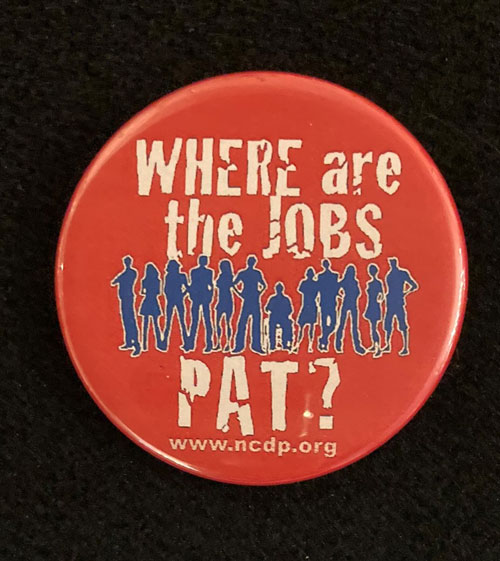“Nearly overlooked in the hubbub [over the 2010 National Book Awards] was the first-time nomination of an under-recognized author who [was born in Gastonia and] grew up in Raleigh — Lionel Shriver, for her novel ‘So Much for That.’
“Shriver was raised in Raleigh until high school, when her family moved to Atlanta. Since 1987, she has spent most of her time in the United Kingdom; she now lives in London and Brooklyn. Her fifth novel, ‘A Perfectly Good Family’ [2007] was set in an historic house on Blount Street in downtown Raleigh.”
— From “Raleigh native’s [sic] book picked” in the News & Observer (Oct. 18, 2010)
“Her father [Donald Woods Shriver Jr.] was a Presbyterian minister and, later, a professor and president of Union Theological Seminary…. At the age of 8, she decided that she did not want to have children of her own. When she was 12, she announced she would not be going to church any more. Her father dragged her into the car by her hair. ‘I have a rebellious streak a mile wide,’ she says, ‘and admire people who get away with things.’
“She changed her birth name Margaret Ann to Lionel when she was 15: ‘I was a tomboy. I grew up with brothers. So I chose a boy’s name…. A friend tells me that if I am so perverse as to change my name to Lionel, then I deserve the tedium of having to explain it to everyone I meet.’ “
— From “Time to talk about her big brother“ by Viv Groskop in the Observer [of London] (April 21, 2013)
“Officials at an Australian writers festival were so upset with the address by their keynote speaker that they publicly disavowed her remarks….
“[Lionel Shriver] had defended her right to depict members of minority groups in any situation, if it served her artistic purposes.
“ ‘Otherwise, all I could write about would be smart-alecky 59-year-old 5-foot-2-inch white women from North Carolina,’ she said.”
— From “Lionel Shriver’s Address on Cultural Appropriation Roils a Writers Festival” by Rod Nordland in the New York Times (Sept. 12, 2016)




